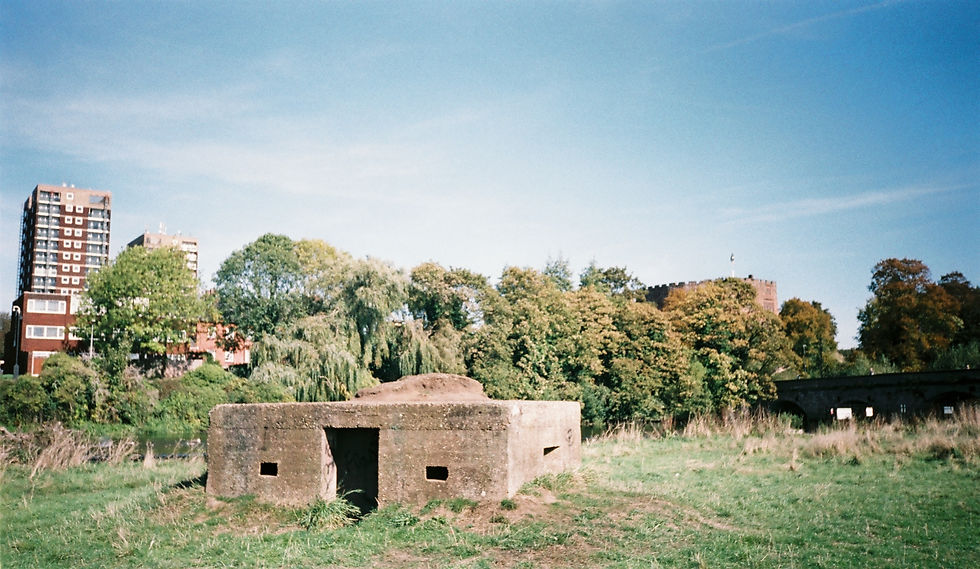Autumn Photo Series - an 'APS' on APS
- Johnny Wilson

- Nov 24, 2018
- 4 min read
Updated: Feb 6
In September this year I found out my local Boots shop in Leamington Spa still processes and scans APS film! I didn't think there was a lab left in Britain that still dealt with it and I'd pretty much written it off as too difficult to deal with. APS, an acronym for Advanced Photo System, was a very short lived joint project by some of photography's biggest names to essentially modernize film photography. Introducing the ability to choose between different print sizes at an increased aspect ratio beyond regular 35mm film, and automatically recording the date of a photo on the photo prints amongst other tweaks, it was the last roll of the dice to present film photography as a competitor to the fast growing digital photography market. It ultimately failed for reasons too long to go into detail over, but broadbrushly speaking it was an unpopular format shift for many professional photographers who had invested many years and lots of money in 35mm and saw the reduction in photo resolution as undesirable. Production of APS film carried on right up until 2011 and given it's short shelf life any rolls of it left available in the wild (read as: on eBay...!) nowadays will all most likely have expired at some point in 2012.
I had four rolls of Fujifilm Nexia 200 left that expired in September 2012. Deciding that it would make a fun project to document Autumn on film, knowing that APS film, generally speaking, did not age well, I loaded the first roll up in my camera and set off to shoot all 4 rolls in 2 months. I wasn't entirely sure what kind of results I would get out of shooting APS film 6 years after it was supposed to have been processed but for the most part they turned out fine! Roll #1 I started out this project shooting 2 rolls in the only APS camera I had: a compact Kodak Advantix C400. Despite being an APS camera there was no option to include a date imprint, or message imprint e.t.c but it did have the 3 aspect ratios and a built in auto flash. The C400 was released in 2000 and I'd had mine for about 10 or 12 years, it's fully automatic with no manual controls. Despite being expired both these rolls of film turned out pretty well. I shot most of this roll on H, but took a few P photos.











Roll #2
Halfway through shooting roll number 2 I dropped and broke my camera at Loughborough Railway...so this roll was prematurely cut short. The impact on the concrete triggered my camera to rewind the film roll and mark it as completely exposed so that was the end of that! But I had shot about 20 odd photos before it happened. I shot this whole roll on H ratio.


















Roll #3
After scrapping my Advantix I sourced 2 replacements on eBay to use with my last 2 rolls: a tiny compact Canon IXUS M-1 and an APS SLR: a Canon EOS IX-7. Despite being all produced at around about the same time the 2 Canon models offered more features than the Kodak compact and, generally, took the better photos. The lens on the M-1 was a wider angle focal length than the C400 and also generally more sharper. Like the Advantix it's mostly fully automatic but does have different flash settings. I shot this whole roll on C ratio.




















Roll #4
I shot my last roll with the EOS IX-7, using a combination of lenses: an ef 28-80mm, an ef 35mm f2 prime and an ef 80-200mm. One of the biggest strengths of Canon cameras (and a big decider in me buying my first DSLR from Canon) is that the ef mount is so universal. I have a 35mm, and APS and a digital SLR that can all use the same lens mount! I was really excited to get to play with this and I want to use it more in the future. It offered the full manual control you get with any SLR and I mostly shoot on TV setting. This roll of film turned out much grainier than the others but the photos were still really nice. I shot a combination of H and P.



















I'm really happy with the photos I got from the 2 Canon cameras, and the difference in quality speaks for itself! If you're reading this and contemplating buying an APS camera go for a Canon IXUS, but first ask yourself why that's a good idea in 2018...! That being said shooting this project has been fun for me, and despite being something of a footnote in photography history, APS film can still be interesting and fun to use. The 'in camera crop' aspect ratio settings can help you be more creative with panoramic photos and if you still print pictures, having a date and time stamp on the back of the prints can be useful for archival purposes. I really enjoyed using the little IXUS M-1, it's so lightweight and really compact, and with a built in flash with different flash settings it's a perfect point and shoot. I'm planning on sourcing some more APS film to use with it some more.
But if shooting this project taught me anything it's that it's clear to see why APS film didn't work. It doesn't offer much more that can already be accomplished with 35mm film, and photographers would have to source whole new equipment to use it and photolabs whole new equipment to process and print from it. In modern times; being harder to source and harder to get processed, it won't ever enjoy the cult following that 35mm film has now.